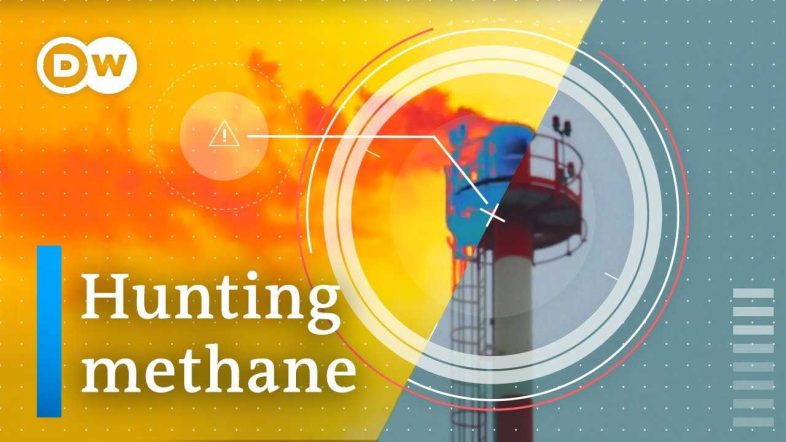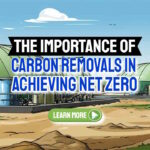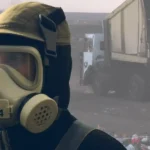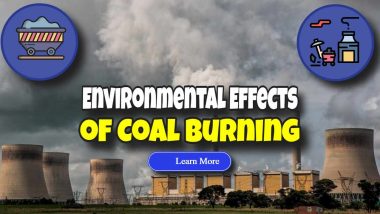We agree with the DW Planet A YT Channel about the risk of climate change acceleration due to fugitive methane emissions. You’re looking at the world’s largest climate disaster that no one is talking about.
“Methane is present in all of this.” Methane. This very powerful greenhouse gas is quietly baking the Earth.”
Since the Industrial Revolution, it has been responsible for more than a quarter of global warming. And it’s pouring out of fossil-fuel plants for no apparent reason. “We’re talking about plumbing, literally.” That’s correct! Reduced methane emissions are one of the cheapest, quickest, and simplest ways to slow climate change.
But the companies in charge don’t always do it — and, with a few exceptions, no one holds them accountable. “What we’re going to do today is look for methane and figure out how to get rid of it.” Let’s go hunting for methane.
The Clean Air Task Force
But first, meet James Turitto of the Clean Air Task Force, an environmental organisation that is pushing for technological and policy solutions to keep the planet from heating up. It works with governments to encourage carbon capture, pollution reduction, and the construction of nuclear power plants.
In the video below we meet Turitto in Berlin and take the train to northern Italy to look for methane in places, it shouldn’t be.
Turitto’s mission is to travel across the continent in search of fugitive methane emissions from fossil fuel facilities.
However, for those that are short of time, we have added our text version of the contents of this video below because we know that a lot of our visitors are short of time, and prefer to scan through the text for the information they are seeking.
Also, watch this on the Youtube Channel from which this is embedded here.
“It’s the kind of detective work that could be critical to keeping global warming under control.”
Methane is a gas that completely devastates the environment. Unlike CO2, it does not linger in the atmosphere for long before decomposing, but while it does it is a potent warming gas.
“It is far more powerful in the short term than carbon dioxide.”
It’s so powerful, in fact, that methane heats the planet more than 80 times more than CO2 over a 20-year period. “If we can cut methane emissions by 45% in the next ten years, we can save nearly 0.3 degrees Celsius of warming over the next 2-3 decades.” [Reporter]
Three degrees. Is that a lot or a little?” “That’s a lot, to be sure. It slows the rate of warming and gives us more time to address the more difficult challenges associated with carbon pollution.” The issue is that methane concentrations are rapidly increasing.
Methane Gas is leaking from farms, landfills, and fossil fuel infrastructure
Across the globe, massive amounts are leaking from farms, landfills, and fossil fuel infrastructure. Cattle is a source you may already be familiar with. Cows have four stomachs that digest food in such a way that their burps are filled with methane.
Rice paddies are another major source of agricultural methane emissions. Sources like this, along with sheep and some other foods, account for 40% of human-caused methane emissions.
Landfill Gas Fugitive Methane Emissions
Then there are landfills, which account for roughly 20% of the problem. When bacteria decompose organic waste in the absence of oxygen, methane is produced. However, the source we’re interested in is the simplest to address: fossil fuels.
They are responsible for one-third of all methane emissions produced by humans. Methane makes up nearly all of the gas we use for cooking and heating. However, it is leaking everywhere: offshore rigs, oil wells, gas pipelines, and the facilities we are about to visit. We’re on our way to an industrial park on Milan’s outskirts where fossil gas is stored. These kinds of facilities are an important part of the energy supply chain that few people are aware of.
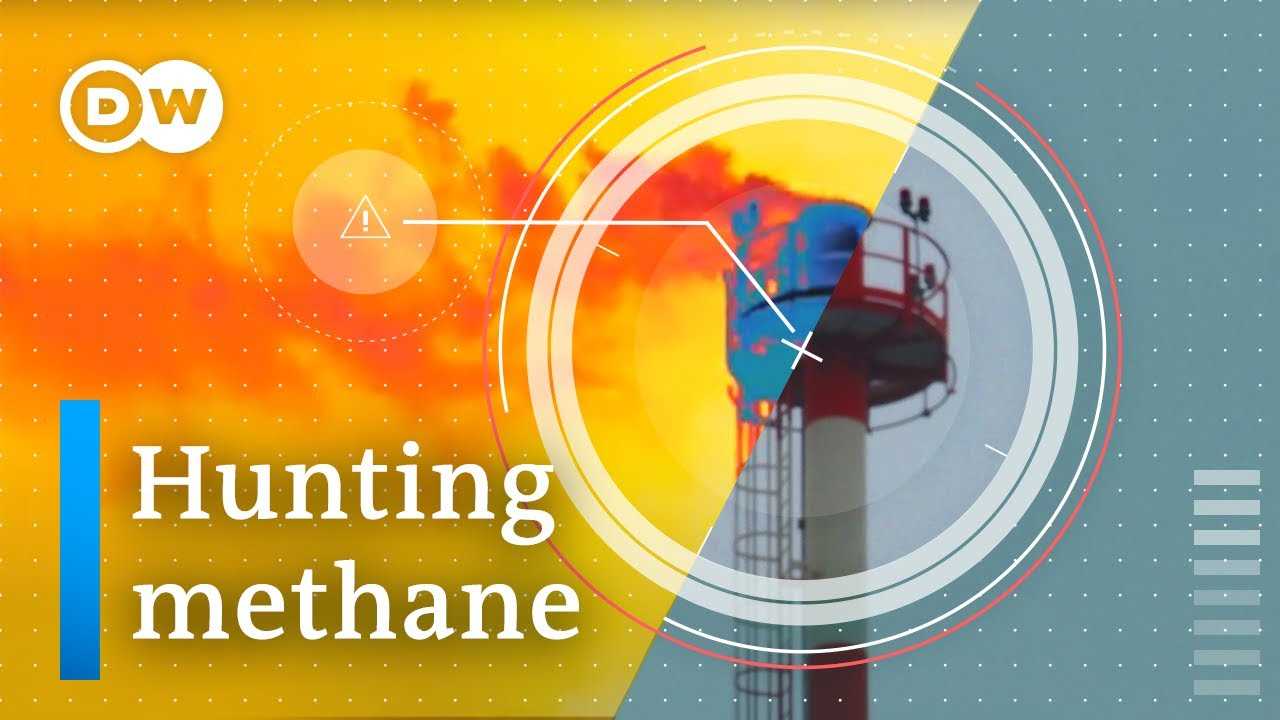
Specialist Camera Used to Identify Methane Leaks
“We’ve come to see the pollution that the naked eye cannot see. You could be living right next to a methane leak and be completely unaware of it.” People who call out fossil fuel companies for polluting are generally not pleased.
So, when Turitto arrives at a site like this, he stays outside the security fence and uses a special camera to scan the area for methane. And now comes the big question: Will we be able to detect fugitive methane emissions escaping from the facility?
Vent Stack Leakage
“What you’re seeing is gas escaping from the vent stack.” Making the invisible visible is at the heart of what methane hunters do. [Reporter] “I literally can’t see anything on my phone, and here we can see a massive gas leak pouring out of the top of that pipe.” “That’s right.” There’s a reason why my camera doesn’t detect these emissions.
My phone set me back a few hundred euros. Turitto’s camera, on the other hand, cost 100,000 euros!” says the narrator.
“The camera detects infrared radiation at the wavelength required to detect hydrocarbons such as methane, which is why the price is so high. The camera can’t measure how much is leaking out, but it can show where the problems are.
“It can see invisible gases and detect things that I, as a normal person, cannot. That is incredible.
But it does explain why this entire industry gets away with all of these methane emissions, doesn’t it?
“People have no idea how much is leaking out or where it is coming from.”
According to the International Energy Agency, the world’s methane emissions from the power sector are approximately 70% higher than countries report in their official data. Tracking those emissions, however, is difficult — even for those who hunt methane.
Is the Battle Lost Before We Start?
“We’re not completely lost, are we?
No, we aren’t lost. [Laughs.]
We went to the location outside of town.” We’ve driven to a different gas storage facility outside of town. And, you guessed it, we can see another plume of methane less than five minutes after setting up the camera.
[Reporter] “Are you saying that tall tower over there is pumping out more methane than the one we just saw?” “That’s definitely more than the last location we visited, and we’re also further away. It’s a little more difficult to see.” The size of these leaks is significant because it turns out that governments aren’t the only ones who underestimate methane emissions.
Companies that are to blame are frequently to blame as well.
[Reporter] “So you can go to a place like this, set up the camera, and you’ll almost certainly see some methane coming out somewhere?” “Yes, especially at a site like this, the larger the site, the more equipment you have, the more likely there will be some sort of methane emissions.”
How Does the Methane Leak Out?
Methane can be released in three different ways. Simple leaks can occur as a result of a screw that has not been tightened or a rusted piece of equipment.
Then there’s venting, which is the deliberate release of methane.
This could be done, for example, to reduce pressure in a pipe during maintenance work. Flaring is the third method, in which methane from the vent is burned.
Burning methane reduces it from a super-harmful greenhouse effect gas to a regular-harmful gas. However, it is frequently done in such a way that raw methane is still escaping into the atmosphere. The Clean Air Task Force will visit 250 oil and gas sites across Europe in 2021.
Nobody is talking about this invisible gas.
Is Fugitive Methane Leakage a Rare Event?
They collected data on methane emissions from 180 different sources. As a result, they can judge that these aren’t isolated occurrences. When Turitto visited 8 months ago, many pieces of equipment were leaking methane.
Some appear to have come to a halt. Others are even pumping out more gas than they did the previous time.
“Some of the sources are unquestionably EASILY fixable.2
We were just looking at a valve that appeared to be easily tightened. Other things, such as fixing and repairing them, maybe a little more difficult to understand where the emissions are coming from.” We questioned the facility’s operator, Snam, about the leaks we discovered, but they did not respond to our request for comment. However, site operators are not the only ones to blame: methane is leaking throughout the entire supply chain.
It must be extracted from the ground and shipped or piped long distances before reaching European storage tanks. That’s why we’re heading to La Spezia — to see a port where LNG shipments are being unloaded at a dock.
It’s located in one of the most beautiful parts of the world, at least most of the time.
The problem is that it’s raining, which means the camera won’t be able to detect much methane.
Fugitive Methane Leaks from Ships
To make matters worse, the park where we planned to film the port has been closed due to a landslide. Methane leaking from ships is difficult to detect. However, we should be able to catch it at LNG terminals such as this one.” So we’ve changed our plans slightly, and we’re going to drive around a bit, go to another side of the port to see if we can see anything, and hope the rain clears up but…
I’m not sure. It’s not ideal.” The European Union is the world’s largest gas importer. Gas accounts for more than one-quarter of the energy demand in countries such as Italy and Germany.
Reliance on Russian Natural Gas Supplies
They are reliant on Russia, the world’s largest exporter. Shipments from the United States and the Middle East are also received at terminals like this one in Europe. Even from our second vantage point, we can’t tell if the terminal is currently leaking methane. “It’s nearly impossible to see it from this distance and under these conditions — rain, fog, wind, and the background. You should be much closer to the source.
“And here’s the rub: without constant access to the sites, there are serious limitations to how well these emissions can be detected.
Methane Leakage Seen from Space
Fortunately, there is another perspective on the same problem — from space. That’s correct: Infrared sensors in satellites hundreds of kilometres above our heads are assisting scientists in detecting methane leaking from beneath our feet. And they’re terrified by what they’ve discovered.”
In the field, we can see all of these defective leaky materials or a tank that is leaking more than it should.
But you don’t see the important players.” Thomas Lavaux is a scientist who uses satellites to identify methane ultra-emitters.
Using Satellites to Identify Methane Ultra-emitters
Satellites aren’t perfect: they have difficulty detecting methane at night, through clouds, or above water. On land, however, they pick up emissions that are on a completely different level. According to Lavaux’s research, massive releases account for about 10% of the industry’s methane emissions.
They occur infrequently, but they do occur all over the world. Ultra-violet events are caused by equipment failure or by companies clearing methane from pipes in order to perform maintenance work on them. “That massive methane burst is worth a thousand leaks.”
These Crazy Losses Not Only Damage the Planet But Gas Companies are Losing a Fortune!
All this comes at a high cost: lost revenue due to gas waste lost lives due to air pollution and lost time in the fight against climate change.
According to the study, four countries — Turkmenistan, Russia, the United States, and Iran — could save billions of dollars by addressing only these ultra-emitting events.
Addressing the industry’s fugitive methane emissions problem is ridiculously cheap
And here’s the big takeaway so far: addressing the industry’s methane problem is ridiculously cheap. Using existing technologies, fossil fuel companies could reduce methane emissions by a whopping 75%. “In some cases, tightening a bolt or closing a valve is all that is required.” Some leaks are unavoidable as equipment wears out or workers make mistakes. Companies can choose to find and plug them as soon as possible.
“How do you deal with the methane that leaks from unlit vents and flares?” “More regulations are needed, as well as more stringent inspections of facilities that intentionally vent. In many cases, the solutions are quite simple.” More than 40% of the IEA’s proposed emissions cuts would literally cost nothing.
This is due to the fact that businesses could sell the gas they waste.
“When you vent gas, you lose a significant amount of gas. That’s a lot of cash.” This is due to a number of factors. Some businesses have no idea how much is leaking. Some people would rather invest their money in activities that produce short-term profits.
And some lack the infrastructure to sell it for industrial use. But, to be honest, there’s an even bigger scandal here.”
Lack of Regulatory Controls Means by Allowing Fugitive Methane Emissions it is Not Illegal!
The most astonishing aspect of all of this is that some of these methane emissions are not even illegal.
That’s the part I don’t understand. This is warming the planet, and there are no regulations in place to prevent companies from doing so.
Things are Changing
A historic agreement to cut methane emissions” was agreed at the COP26 climate summit, where leaders from over 100 countries committed to reducing global methane emissions by 30% by the end of the decade.
The European Union, for example, intends to impose new standards for measuring and reporting methane emissions, as well as detecting and plugging leaks.
It’s even suggested that venting and flaring be prohibited.
What it hasn’t considered is setting a standard for the oil and gas it buys from other sources. Imposing import standards that cover the entire supply chain could result in changes in countries with leakier facilities. This could spur the changes needed to reduce global methane emissions — and buy the extra time needed to keep temperatures from rising.
If you want to see more videos with climate crisis solutions, subscribe to the DW Planet A YT Channel. They have more videos coming out every Friday looking at different ways to get us out of this climate change mess.
Efficient Conversion of Sewage to Biogas: Advancing Waste Treatment for Sustainable Energy Generation
Read on to learn about advancing foul waste treatment, for sustainable energy generation through the efficient conversion of sewage solids to biogas. When we talk about waste, it can seem like a dirty subject. But what if we could turn that waste into something useful? Imagine the mucky water and sludge from our toilets and […]
The Importance of Carbon Removals in Achieving Net Zero
Carbon removals being the opposite of carbon emissions will be a significant contributor to the effort to reduce the worst effects of climate change and global warming. While reducing emissions is crucial, it is not enough to achieve the goal of net zero by 2050. Active removal of carbon from the atmosphere is necessary. Of […]
US Falling Short on Methane Emissions Reduction Commitments from Landfills: Report
The United States is failing to uphold its commitment to reducing methane emissions from landfills, a promise it made at the Glasgow 2022 Climate Change Conference, according to a new study. The United Nations Framework Convention on Climate Change (UNFCCC) has identified this issue as an easily achievable solution for mitigating climate change within the […]
UK Begins Fightback Against Plastic Pollution: Dramatic 2040 Deadline Set for a Cleaner Future
The UK government has signed a Ministerial Statement calling for an ambitious global plastic pollution treaty to tackle plastic pollution and protect the marine environment. A plastic pollution treaty is sought for: including a reduction in single-use plastics, the improvement of waste management and recycling systems, and the promotion of sustainable and circular economy models. […]

